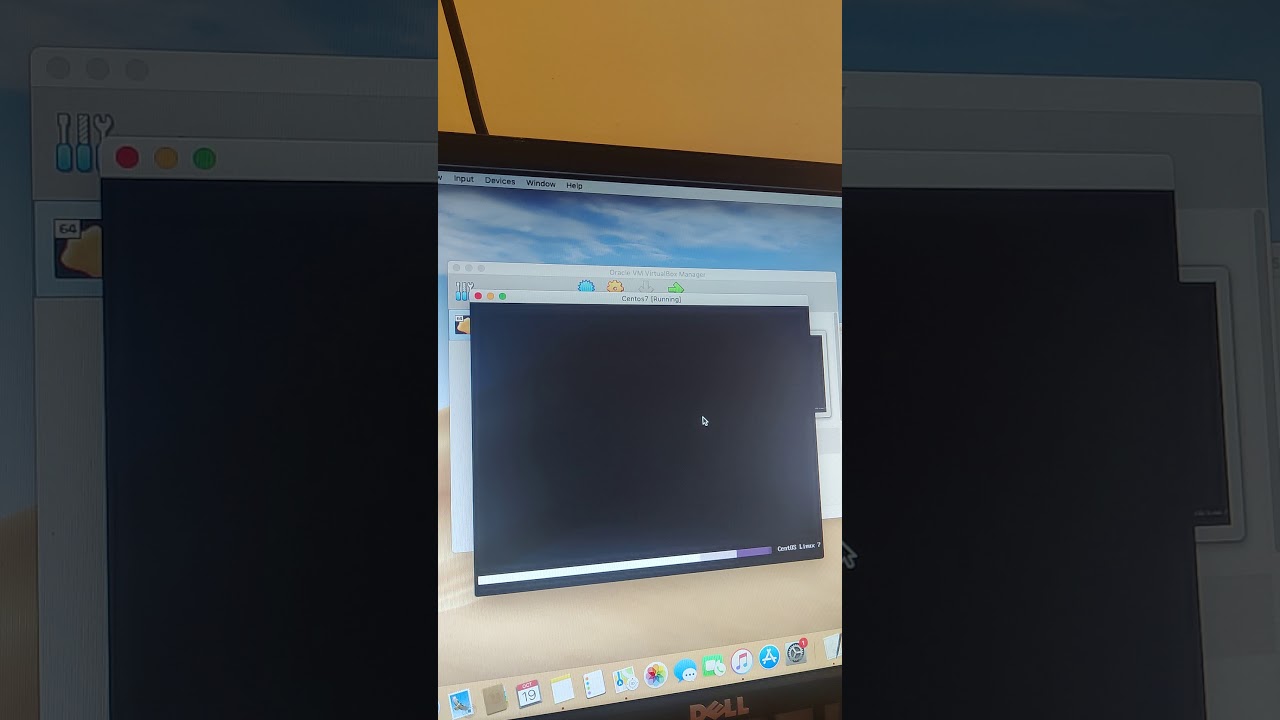Mac Virtual Machine Linux
- Osx Virtual Machine Linux
- Mac Virtual Machine Linux Command
- Parallels For Mac Virtual Machine
- Mac Virtual Machine Linux Downloads
Table Of Content
Osx Virtual Machine Linux
View more Tutorials:
1- Download Mac OS
Dec 07, 2020 I’m using Mac and I’ve installed debian linux on virtual box. I want to copy a URL from my Mac to terminal linux in virtual box. How can I do that? How to solve this problem? 1: Sometimes, it’s just easier to open a terminal on the Mac and then SSH to the VirtualBox guest. That avoids a lot of the hassle of changing focus, etc. Mar 22, 2021 Boxes from Gnome is a creation and management tool for virtualization designed for Linux and can help you customize all kinds of virtualization tools — from specific workstation setups to enabling. Installing macOS on the Virtual Machine. Now just run basic.sh to start the virtual machine with the Clover bootloader./basic.sh. The clover bootloader should come up, and you can select the first option here to boot into the recovery utility. First, make sure to format the drive using the disk utility so that the installer lets you use it. Installing macOS on the Virtual Machine. Now just run basic.sh to start the virtual machine with the Clover bootloader./basic.sh. The clover bootloader should come up, and you can select the first option here to boot into the recovery utility. First, make sure to format the drive using the disk utility so that the installer lets you use it. Run Windows, Linux and macOS without rebooting. Validate web apps in any browser on any OS, all at the same time. Download prebuilt virtual machines (VMs) with preinstalled dev tools. Test software in isolated VMs with snapshot and rollback support.
| Mac OS Version | Name | Release Date |
| 10.10 | Yosemite | June 2014 |
| 10.11 | El Capitan | September 30, 2015 |
| 10.12 | Sierra | June 12, 2016 |
| 10.13 | High Sierra | June 5, 2017 |
Mac Virtual Machine Linux Command
2- Create Mac OS Virtual Machine
Parallels For Mac Virtual Machine
Mac Virtual Machine Linux Downloads
3- Configure VBoxManage
- LINUX (Ubuntu,..):/home/{user}/VirtualBox VMs
- WINDOWS:C:/Users/{user}/VirtualBox VMs
4- Start the Mac OS virtual machine
View more Tutorials:
We love Linux, we love Open Source, we avoid all the stress caused by macOS or Windows. However, there will come a time when you need to use software for work and that software runs only on macOS or on Windows. If for Windows we don’t have big problems and we can find solutions in all the sauces, macOS things get a little complicated.
When the friend you forced to switch to Linux a while ago comes to you and asks you how to use Adobe’s corporate macOS suite on his PC, what do you do?
Some time ago it would have been very complicated and you would have convinced him to use a Windows VM to take advantage of the Adobe suite, but today things have changed.
A simple macOS VM in QEMU, accelerated by KVM
Obviously we are talking about a simple procedure that implies the use of huge hardware resources: already a Mac in itself uses powerful hardware let alone virtualize it what computing power we need. Nothing transcendental since today’s computers are thousands of times as powerful as Apollo 11 on the Moon, so let’s not worry too much.

As we said, there is a minimum CPU requirement for macOS itself: both Intel and AMD CPUs are supported, but the recommendations are Ivy Bridge (or later) Core and Xeon processors, or AMD Ryzen, AMD Threadripper, and AMD Epyc processors. You also need some disk space and the bare minimum virtual disk size would be around 20GB, but you’ll find it hard to get any apps installed. Adobe Photoshop Elements 2020, one of the most simple Adobe applications, needs 6.5GB of available hard-disk space to install and additional 2.5GB to download all optional content. So, take a look at the space you need.
You’ll need a Linux system with QEMU, python3, pip, and the KVM modules enabled. A Mac is not required.
sudo dnf install qemu qemu-img python3 python3-pip # for Fedora
sudo zypper in qemu-tools qemu-kvm qemu-x86 qemu-audio-pa python3-pip # for openSUSE
sudo apt-get install qemu-system qemu-utils python3 python3-pip # for Ubuntu
Run jumpstart.sh to download installation media for macOS (internet required). The default installation uses Catalina, but you can choose which version to get by adding either --high-sierra, --mojave, or --catalina. For example:
Note: You can skip this if you already have BaseSystem.img downloaded. If you have BaseSystem.dmg, you will need to convert it with the dmg2img tool.
Create an empty hard disk using qemu-img, changing the name and size to preference:
and add it to the end of basic.sh:
Note: If you’re running on a headless system (such as on Cloud providers), you will need -nographic and -vnc :0 -k en-us for VNC support.
Then run basic.sh to start the machine, first, use Disk Utility to partition the virtual disk and then install macOS.
To fine-tune the system and improve performance, look in the docs folder for more information on adding memory, setting up bridged networking, adding passthrough hardware (for GPUs), tweaking screen resolution, and enabling sound features.
For all the additional info, for the solved and opened issues and to contribute to the project, you can find all at the GitHub page: https://github.com/foxlet/macOS-Simple-KVM/.
Also, if you like simple things and SNAP, you can also use SOSUMI, the snap version of this package. Just launch SOSUMI from the terminal to monitor the initial launch setup (subsequent launches can be done via the desktop icon) and this will boot to the macOS recovery system. It’s available on snapcraft.io (https://snapcraft.io/sosumi) snap archive.
